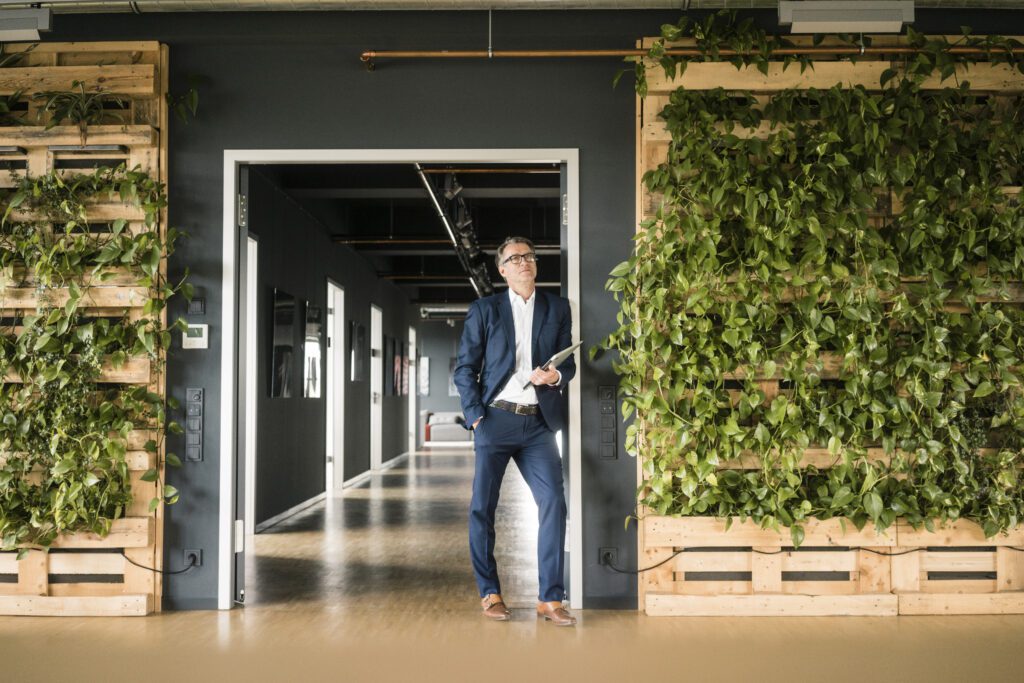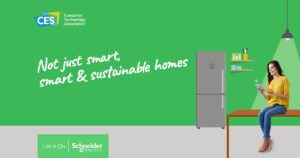More and more companies are announcing targets for net-zero IT infrastructure and empowering customers to do the same. But to what extent do climate aspirations among IT and data center stakeholders reflect reality? To find out, Schneider Electric™ recently commissioned sustainability research studies in the data center and IT industries and discovered the following:
- Per Forrester, 72% of colocation providers surveyed say they are at the beginning of their sustainability journey, but only 33% say that their organization has created a strategic sustainability plan.
- Per 451 Research, 75% of enterprises surveyed believe they have a full sustainability program for at least part of their IT infrastructure, but 48% of the respondents’ subsequent evaluation of their own maturity did not match reality.
- Per Canalys, IT channel partners are investing in sustainability strategies where 60% have one dedicated resource on environmental, social, and governance (ESG), and 40% expect revenue from sustainability solutions. Energy optimization, energy efficiency, and managed power services are key opportunities for partners.
As the surveys indicate, it is among enterprises that we see the biggest gap in terms of where firms think they are versus where they are. How can we close that gap?

Here are five practical tips from experts we gathered at Schneider’s Innovation Summit Las Vegas. We hosted an exciting panel on how we can drive measurable carbon reduction across the IT and data center industries — and thus, connect ambition with action.
1. Play ESG matchmaker between data center and sustainability stakeholders.
Several panelists agreed that in the enterprise world, chief information officers may still struggle to understand what the right path to sustainability is. Where should they focus their efforts? How does sustainability align to business objectives? In this context, IT vendors and partners must work with prospects and customers as trusted advisors.
John Pflueger, Principal Environmental Strategist at Dell, pointed out that data center professionals and sustainability experts often have their own language. John added that while these two worlds are both great at what they do, they don’t necessarily understand each other’s vocabulary or each other’s drivers. We can close those gaps by serving as ESG matchmakers in a way, getting both communities to start the conversations needed to understand each other’s worlds.
2. Team up with strategic partners.
Every one of us on the panel agreed that customers are looking for partnership to accelerate carbon reduction efforts. In other words, customers are not just chucking a ton of carbon over the fence and saying, “Go solve this for me.” Instead, they’re looking for expert partners to help them with carbon accounting and requesting data that helps them stay on target. When you think about the scale of data gathering and analysis across the enterprise — e.g., conducting full life-cycle assessments and publishing environmental product disclosures — the need for partnership becomes even clearer.
Partnerships are integral, too, for helping customers not just level-set their carbon profile but also accelerate their reduction efforts, especially in conjunction with digital transformation to pave the way for broader electrification across the enterprise. Brendan Walsh, Principal, ESG, at World Wide Technology (WWT), emphasized that the climate issue is the single largest challenge that humanity has faced. I agree with him 100% that we need to have a complete paradigm shift, accelerated by partnerships, because no one can go it alone. Everyone will run their own race to net zero, but we need to treat it as a relay race, not individual competition.
3. Pay attention to more than just decarbonization as a sustainability concern.
There’s more to sustainability than decarbonization. In fact, there are several unexpected dimensions of assessing data center sustainability that we’ve just standardized in a recent white paper.
What do data centers have to do with biodiversity, or water use? Climate leaders such as Wes Swenson, CEO, Data Centers, Novva, brought the water shortage issue to the table. It is imperative, he said, that the data center industry focuses its ESG efforts on water resources as well. As Novva knows firsthand, with colocation data centers in the drought-plagued Western U.S., being water-free in its cooling technologies is not only pragmatic but it is also environmentally responsible; accordingly, water strategies must be part of a holistic ESG strategy across the data center industry.
4. Improve sustainable product design across your value chain.
For many companies, net-zero carbon reduction goals may seem ambitious and out of reach. Some panelists suggested adopting Science Based Targets (SBTi), which now includes the world’s first framework for corporate net-zero target setting that’s in line with the latest climate science. These mileposts can help you track often-overlooked components of a total corporate carbon footprint, such as those that result from your customers’ use of your products.
Another area to scrutinize: product design. How might you address product design and supply chain requirements in your sustainability efforts? Schneider’s own EcoDesign Way™ for example, has been very successful to date for reducing the environmental impacts of our products and is a key lever moving forward to achieve our 25% Scope 3 reduction goal by 2030. In fact, I believe strongly that reducing embedded carbon through design and materials choices is going to fast become a sustainability driver right behind energy efficiency among our enterprise and channel customers.
5. Pay attention to disposing of products responsibly.
It goes without saying that upholding sustainable product commitments across the industry includes disposal as well. Sustainable design is often top of mind, but what happens on the other side of the continuum? I was happy to hear John Pflueger of Dell say that he’s seeing more and more attention being paid to what happens to items at the end of their product life. Is there an opportunity for your company to offer end-of-life services that achieve a win-win for you, your customers, and our planet?
The road ahead
Although there’s still a gap between ambition and action, the trend is absolutely moving in the right direction and momentum is building. Indeed, customers are prioritizing sustainability efforts now, for they know that if they do not act today, there is no do-over down the road. Fortunately, my peers from Dell, Novva, and World Wide Technology are saddled up to accelerate the same cause. Working in partnership — and alongside customers — we can assure that a net-zero future for IT and data infrastructure is possible.
If you’d like to learn more about tackling the great decarbonization challenge, see this e-book on “Getting It Done” — a guide to help any organization convert sustainability ambition into action.



